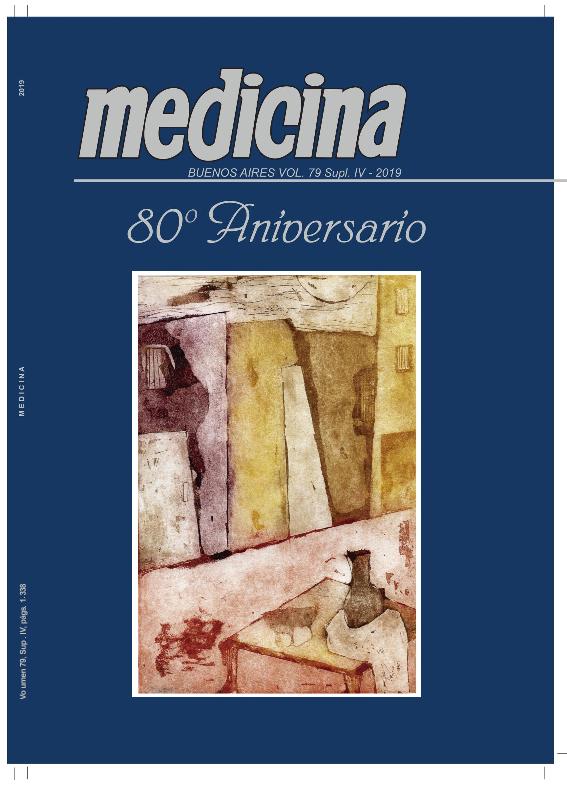Evento
New findings for old players: Imidazolium salts as protective drugs in C. elegans models of stress and neurodegeneration
Andersen, Natalia Denise ; Veuthey, Tania Vanesa
; Veuthey, Tania Vanesa ; Silbestri, Gustavo Fabián
; Silbestri, Gustavo Fabián ; Rayes, Diego Hernán
; Rayes, Diego Hernán ; de Rosa, Maria Jose
; de Rosa, Maria Jose
 ; Veuthey, Tania Vanesa
; Veuthey, Tania Vanesa ; Silbestri, Gustavo Fabián
; Silbestri, Gustavo Fabián ; Rayes, Diego Hernán
; Rayes, Diego Hernán ; de Rosa, Maria Jose
; de Rosa, Maria Jose
Colaboradores:
Kotsias, Basilio Aristides ; de Vito, Eduardo
; de Vito, Eduardo ; Narvaiz Kantor, Isabel; Semeniuk, Guillermo Basilio
; Narvaiz Kantor, Isabel; Semeniuk, Guillermo Basilio
 ; de Vito, Eduardo
; de Vito, Eduardo ; Narvaiz Kantor, Isabel; Semeniuk, Guillermo Basilio
; Narvaiz Kantor, Isabel; Semeniuk, Guillermo Basilio
Tipo del evento:
Reunión
Nombre del evento:
LXIV Reunión Anual de la Sociedad Argentina de Investigación Clínica; LI Reunión Anual de la Asociación Argentina de Farmacología Experimenta; XXI Reunión Anual de la Sociedad Argentina de Biología; XXXI Reunión Anual de la Sociedad Argentina de Protozoología; IX Reunión Anual de la Asociación Argentina de Nanomedicinas y VI Reunión Científica Regional de la Asociación Argentina de Ciencia y Tecnología de Animales de Laboratorio
Fecha del evento:
13/11/2019
Institución Organizadora:
Sociedad Argentina de Investigación Clínica;
Asociación Argentina de Farmacología Experimental;
Sociedad Argentina de Biología;
Sociedad Argentina de Protozoología;
Asociación Argentina de Nanomedicinas;
Asociación Argentina de Ciencia y Tecnología de Animales de Laboratorio;
The Histochemical Society;
Título de la revista:
Medicina (Buenos Aires)
Editorial:
Fundación Revista Medicina
ISSN:
0025-7680
e-ISSN:
1669-9106
Idioma:
Inglés
Clasificación temática:
Resumen
Imidazolium salts are attractive pharmacological agents that have been linked to a wide range of biological effects, including antitumoral, antimicrobial, anthelmintic and anti-inflammatory. In this study, we aim to evaluate the role of these compounds as antioxidant and anti- aging agents. We synthesized imidazolium salts and analyzed their ability to improve oxidative stress (OS) resistance. We used an established model in biomedical research, the free-living nematode C. elegans, and exposed them to the oxidizing agent FeSO4. We identified a derivate, 1-Mesithyl-3-(3-sulfonatopropyl) imidazolium (MSI), that enhances animal resistance to OS. To delineate MSI roles, we split this work into two goals: i) to describe MSI action mechanisms and, ii) to evaluate MSI role in neurodegenerative models. To gain insight into its mechanism of action, we evaluated MSI ability to activate DAF-16 (FOXO in vertebrates), a transcription factor relevant for cytoprotective defense mechanisms. Unexpectedly, our experiments revealed that MSI stress protection was not dependent on DAF-16. These results support the idea that other transcription factors (such as SKN-1 (Nrf-2 in vertebrates), HSF-1), could be involved in MSI protection. We are currently performing experiments to identify the role of these molecular players, in MSI-induced stress resistance. The second goal is held by the theory that links OS to aging and neurodegeneration. We are currently evaluating if MSI increases lifespan, healthspan, and improves biological markers of neurodegeneration in a C. elegans model of Alzheimer disease. This strain expresses Aß1-42 in muscle and shows age- dependent protein aggregation and paralysis. Our preliminary results show that MSI delays paralysis in this strain. Additional research is needed to underpin the protective role of MSI and to determine if these effects can be extrapolated in other neurodegenerative scenarios.
Palabras clave:
Neurodegeneration
,
Model
,
Proteotoxicity
,
Oxidative Stress
Archivos asociados
Licencia
Identificadores
Colecciones
Eventos(INIBIBB)
Eventos de INST.DE INVEST.BIOQUIMICAS BAHIA BLANCA (I)
Eventos de INST.DE INVEST.BIOQUIMICAS BAHIA BLANCA (I)
Eventos(INQUISUR)
Eventos de INST.DE QUIMICA DEL SUR
Eventos de INST.DE QUIMICA DEL SUR
Citación
New findings for old players: Imidazolium salts as protective drugs in C. elegans models of stress and neurodegeneration; LXIV Reunión Anual de la Sociedad Argentina de Investigación Clínica; LI Reunión Anual de la Asociación Argentina de Farmacología Experimenta; XXI Reunión Anual de la Sociedad Argentina de Biología; XXXI Reunión Anual de la Sociedad Argentina de Protozoología; IX Reunión Anual de la Asociación Argentina de Nanomedicinas y VI Reunión Científica Regional de la Asociación Argentina de Ciencia y Tecnología de Animales de Laboratorio; Mar del Plata; Argentina; 2019; 271-271
Compartir



